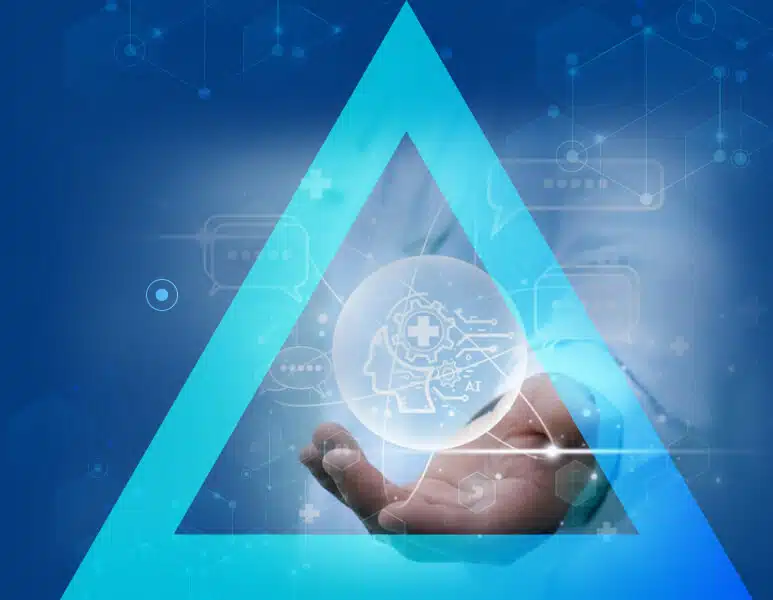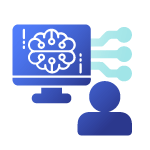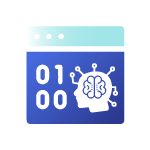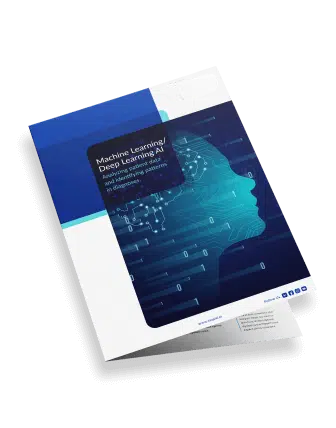Home » AI/ML/Dl » NLP in Healthcare

Why Knowledge Graph Technology for Healthcare Risk Adjustment?
Knowledge graph technology enhances healthcare risk adjustment by leveraging automated analytics and machine learning. Using natural language processing, it constructs a structured network of nodes, edges, and labels through semantic enrichment.
By mapping complex relationships within patient data, knowledge graphs enable healthcare organizations to efficiently identify risk factors, improve diagnosis accuracy, and optimize care plans. This data-driven approach ensures more precise risk adjustment, leading to better patient outcomes and streamlined reimbursement processes.
CONTACT US >
How Are Knowledge Graphs Being Used in Healthcare Risk Adjustment Settings?
Knowledge graphs in healthcare risk adjustment settings offer numerous benefits. They streamline the retrieval of patient data from multiple sources, enabling medical coders to minimize ICD-10 and HCC coding inaccuracies while improving precision through detailed analysis.
Additionally, knowledge graphs provide clinicians with actionable insights into treatment effectiveness, helping them identify the best care strategies for their patients. They also uncover hidden trends and patterns in patient care, supporting data-driven decision-making. Given the complexities of the healthcare system, knowledge graphs are proving to be invaluable not only for risk adjustment but across all facets of modern medicine.
CONTACT US >
Why Choose Metacare AI’s Knowledge Graph Technology for Risk Adjustment in Healthcare?
Metacare AI’s knowledge graph technology transforms complex healthcare data into actionable insights, enabling precise risk adjustment and accurate documentation of patient conditions. This ensures that care delivery aligns with actual health outcomes, improving efficiency and compliance.
Additionally, Metacare AI’s ability to integrate disparate data sources provides near real-time insights into clinical trends and patient risks. This empowers healthcare organizations to enhance care quality, streamline workflows, and optimize reimbursement accuracy while meeting regulatory standards.
CONTACT US >

Leverage machine learning (ML) algorithms to process natural language text and accurately extract key clinical insights.

Automate medical coding and billing documentation to save time while enhancing accuracy in this critical healthcare process.

Adopting knowledge graph technology can transform healthcare risk adjustment by providing a comprehensive and accurate view of patients’ medical histories, conditions, and treatments.
This advanced approach connects fragmented clinical data, uncovering hidden patterns and relationships that traditional methods may overlook. By leveraging sophisticated data analytics, knowledge graphs enhance decision-making, improve patient outcomes, and help reduce overall healthcare costs.
With deeper insights into patient health, clinicians can make more informed treatment decisions, leading to better interventions and optimized care. Additionally, this technology extends beyond clinical applications, driving innovation across research, administration, and healthcare operations.
In an increasingly complex healthcare landscape, organizations must embrace cutting-edge solutions to stay ahead. Implementing knowledge graph technology is a strategic step toward improving efficiency, reducing costs, and delivering superior patient care.
Implementing knowledge graph technology can transform patient care by providing healthcare providers with a unified, comprehensive view of medical data. By integrating patient history, symptoms, and real-time health information in one place, this technology enables more accurate diagnoses and personalized treatment plans tailored to individual needs.
Additionally, knowledge graphs keep healthcare providers informed about the latest research, clinical trials, and treatment advancements, ensuring patients receive the most up-to-date care. This data-driven approach improves decision-making and enhances patient outcomes.
Another key advantage is improved communication and collaboration among healthcare teams. By granting all providers access to the same accurate patient data, knowledge graphs facilitate seamless coordination across specialties, reducing errors and enhancing the overall quality of care.
Ultimately, adopting knowledge graph technology leads to a more personalized, efficient, and informed healthcare experience—empowering providers and improving patient satisfaction.
Knowledge graph technology plays a pivotal role in clinical text analysis by transforming unstructured medical data into an organized, interconnected format. This enables healthcare providers and researchers to uncover hidden patterns, relationships, and insights within clinical notes, patient records, and medical literature.
By structuring vast amounts of healthcare data, knowledge graphs enhance the understanding of complex medical concepts, allowing clinicians to navigate interconnected terminologies with ease. This leads to improved analysis of patient health conditions, treatment outcomes, and disease progression.
Additionally, knowledge graphs seamlessly integrate with advanced technologies like machine learning and natural language processing (NLP), further enhancing data interpretation and automation. Their flexibility and scalability make them a powerful tool for optimizing clinical workflows, reducing manual processes, and improving decision-making accuracy.
By leveraging knowledge graph technology for clinical text analysis, healthcare organizations can enhance patient care, drive research advancements, and reduce costs—ultimately leading to better healthcare outcomes.
Knowledge graph technology is transforming healthcare decision support by integrating and structuring vast medical data for more accurate, personalized diagnoses and treatment plans. By leveraging semantic data modeling, machine learning, and natural language processing (NLP), knowledge graphs unify disparate sources such as electronic health records (EHRs), clinical guidelines, lab results, and medical literature into a single, accessible framework.
This technology enhances collaboration among healthcare professionals—including doctors, nurses, and pharmacists—by providing intuitive access to relevant patient information at the point of care. Unlike traditional databases, knowledge graphs reveal hidden relationships between medical concepts, enabling a deeper understanding of complex health conditions.
Furthermore, knowledge graphs support population health management by enabling predictive analytics and risk stratification. By identifying high-risk patients in need of closer monitoring or early interventions, they improve clinical outcomes while optimizing operational efficiency.
In today’s rapidly evolving healthcare landscape, adopting knowledge graph technology is essential for enhancing decision-making, streamlining workflows, and delivering better patient care.
Knowledge graph technology is transforming Hierarchical Condition Category (HCC) coding by enhancing the accuracy and efficiency of risk adjustment and claim audits. By connecting diverse data points across electronic health records (EHRs), clinical notes, and billing data, knowledge graphs uncover hidden relationships that traditional methods may overlook.
This advanced approach improves the chart review process by identifying relevant diagnoses, ensuring accurate coding, and reducing errors in risk adjustment. It also enhances value-based care audits by providing a holistic view of patient records, leading to better quality measurement and compliance with regulatory standards.
By leveraging knowledge graphs in HCC coding, healthcare organizations can optimize reimbursement, improve patient risk stratification, and streamline the coding workflow—ultimately driving better clinical and financial outcomes.